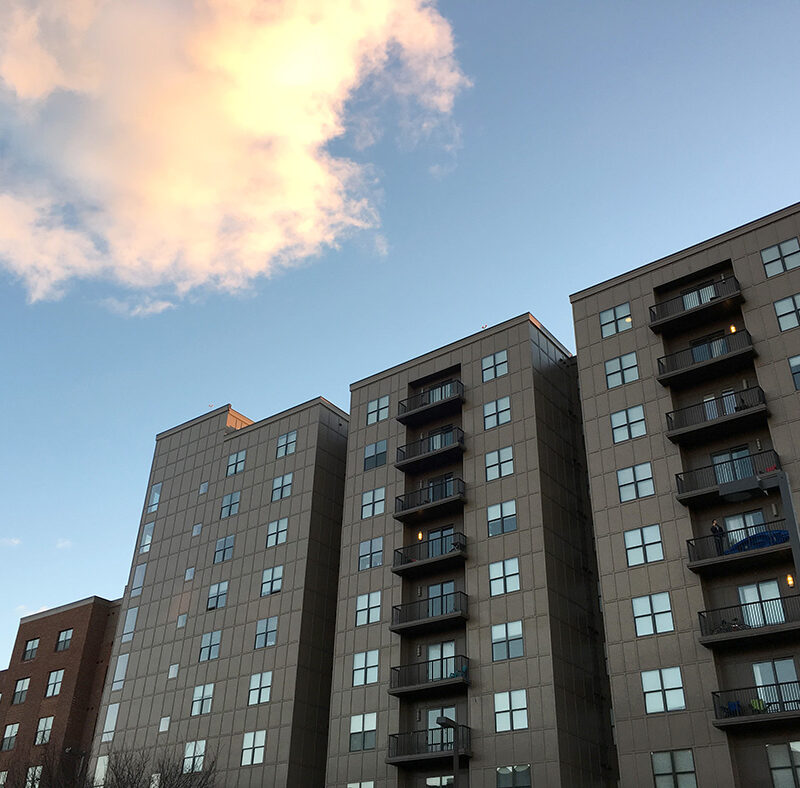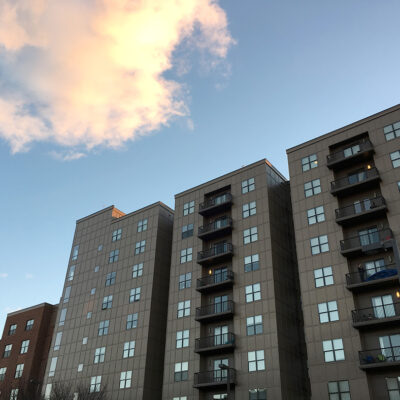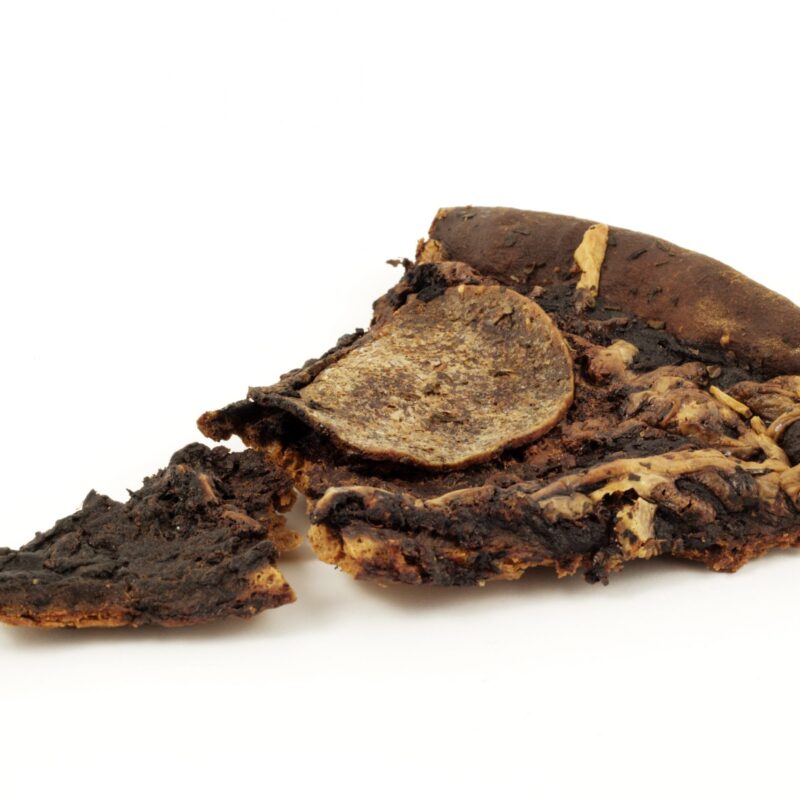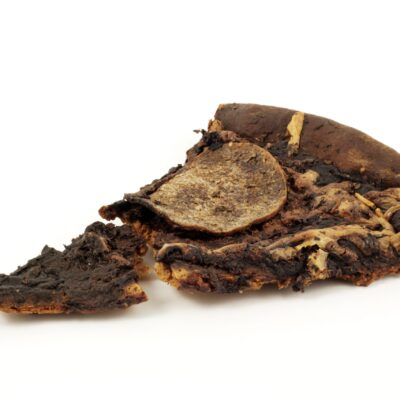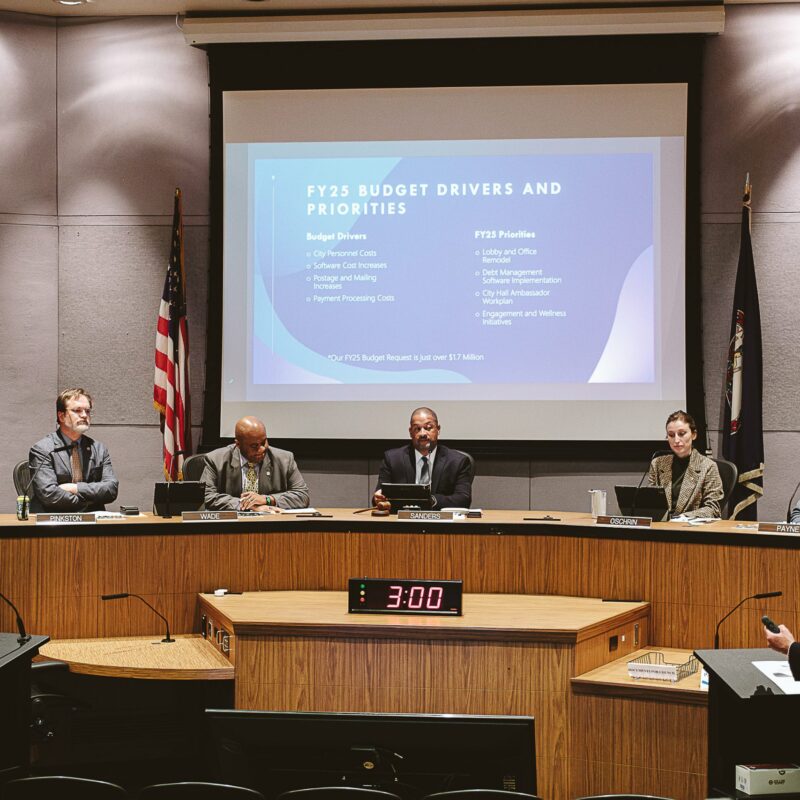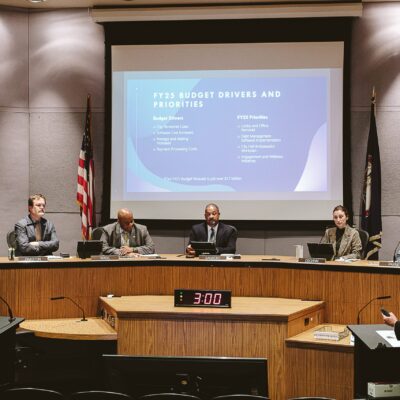If you’ve been seeing pink kangaroos lately, fear not. Your brain isn’t dissolving into a late-winter mush. It’s merely snagging glimpses of Australian artist Reko Rennie’s imitable work about town. If the Aboriginal images stenciled onto construction sites, fluorescent bumper stickers or life-sized kangaroo screen prints brightening up empty storefronts have caught your attention, take the trip to Rennie’s “Patternation” installation at the Kluge-Ruhe Aboriginal Art Collection.
|
Aboriginal artist Reko Rennie’s “Patternation,” an installation, is on view at the Kluge-Ruhe Aboriginal Art Collection through April 4. |
It’s a testament to Charlottesville that patrons of the visual arts would not only invite inside an art style honed on the streets, but host it in a venerable mansion overlooking the town. Last month Rennie donned his respirator, laid down some plastic and transformed the walls of a sitting room on the museum’s ground floor into a perception-bending Krylon collage. Running through April 4, “Patternation” amounts to four moulding-ensconced walls covered in concentric diamonds of blue, orange, magenta, yellow, black, gold and silver. Walking into the room, the repetition immediately plays pranks on your vision, and the pattern seems to pulsate in the corner of your eye. At the front of the room, framing the fireplace, those imposing pink kangaroos stand at more than 6′ tall. Between them hangs a canvas depicting a proudly wooly Aboriginal man immortalized on a 1950 Australian postage stamp. The overall effect is more a surreal immersive experience than a collection of individual pieces that the viewer can come to grips with at his own pace.
For context, the film in the next room documenting the exhibit’s creation is worth a viewing. “You’ve got this connection of this age-old practice of Aboriginal art and tradition,” the artist tells the camera. “It’s fused. It’s this fusion of spray paint and stencils and paint installations and sharing it with whoever appreciates it and wants to see it.”
As one might expect, Rennie’s Aboriginal heritage gives the piece a deeper meaning than its screaming visual effect. The diamond is a male symbol in the culture of his ancestors. The big red species of kangaroo, writes curator Stephen Gilchrist, is a symbol for Aboriginal survival. Even the work’s title, “Patternation,” references not just the obvious characteristics of the piece, but the “patter” of Australian politics that purport to value indigenous culture while simultaneously consigning Aboriginals to a socially disadvantaged position.
Social justice enjoys a consistent presence in contemporary art, but it’s refreshing to see paintings devoted to a cause most in this country know little about. Born in Melbourne, Rennie’s musings on his complex identity as an urban Aboriginal found an outlet in 1980s graffiti culture. He stenciled strains of pre-British tradition onto to the urban landscape it created, and over the years his evolving work found a respected and politically poignant place in Australia’s art scene.
It should soon find a place in Charlottesville’s as well. The Bridge/PAI and Kluge-Ruhe will soon unveil a collaborative painting by Rennie and Native American artist Frank Buffalo Hyde on the Bridge’s prominent exterior wall. With or without pink kangaroos, it’s likely to be an enlivening site for passers-by looking to shake up the patternation of their day.
/_C011293.jpg)
